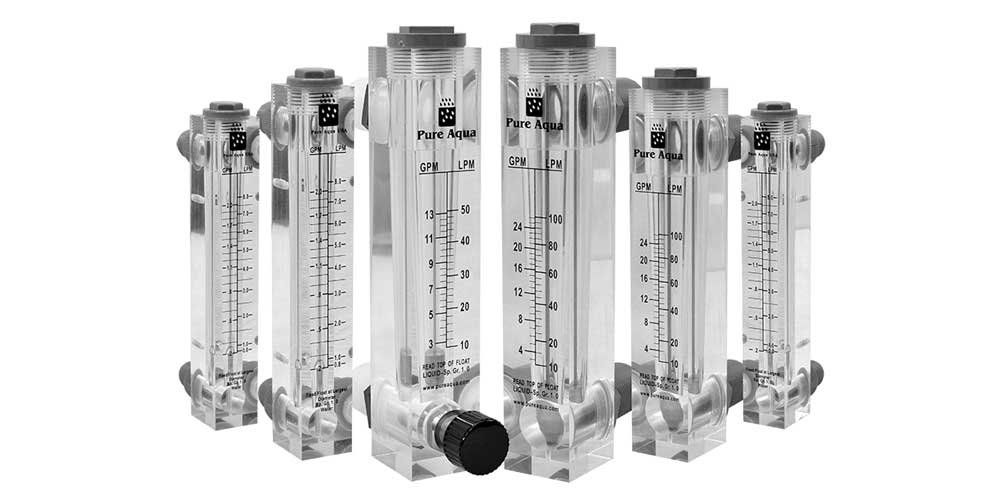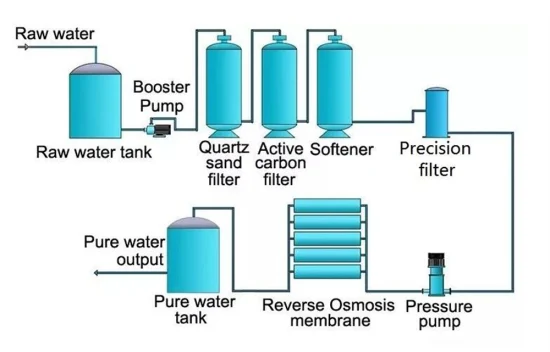
Similar to sieves, membranes allow for the pressing or sucking of water through extremely tiny filters. The filter’s fineness distinguishes microfiltration, ultrafiltration, and nanofiltration. Any material that is bigger than the minuscule pores can pass through. Another variant is reverse osmosis, which allows only water molecules to cross the membrane.
Being able to filter water so thoroughly that it is almost solid-free and, for the most part, organic is why ultrafiltration membranes have found a home in the drinking water industry. Because they are too big to fit through the membrane’s pores, viruses, parasites, and bacteria are not only killed but also removed from the water supply.
Benefits of Nanofiltration (NF)
Nanofiltration (NF) has several advantages, including:
- The medical field finds it advantageous.
- When it comes to dealing with liquid discharges or wastes, this method is very versatile.
- It will help to desalinate salt water.
- It is employed in water purification systems to ward off diseases.
- Many different kinds of chemical particles, both suspended and dissolved, and biological entities (such as bacteria) can be successfully removed from water using this method.
Here are some differences between MF, UF, NF, and RO membranes.
Microfiltration (MF)
Standard microfiltration cartridges, such as ceramic, activated carbon, polypropylene, etc., have an accuracy range of 0.1–50 microns. They are also used for basic coarse filtration, removing large particles of impurities like rust and sediment from water. However, they are unable to remove bacteria and other dangerous substances. Disposable filter materials typically cannot have their cartridges cleaned and must need replacement on a regular basis.
- Ceramic cartridge:
Typically, there is little flow, cleaning is a pain, and the minimum filtration precision is merely 0.1 microns.
- Activated carbon:
Water color and smell can be removed, but bacteria cannot, and rust and sediment are poorly removed.
- PP cotton core:
It is used exclusively for low-demand coarse filtration and may remove big particles like rust and silt from water.
Ultrafiltration (UF)
Using pressure difference, this membrane separation technique may remove macromolecular organic matter, colloid, sediment, bacteria, suspended particles, rust, and other contaminants from water while retaining some mineral elements that are good for the human body. It is the most important step in making mountain water and mineral water. The ultrafiltration procedure may recover water at 95 percent or more. It is also easy to flush and backwash, has a relatively long service life, and does not clog easily.
Ultrafiltration is ideal for the complete purification of drinking water in the home. This is because it does not require the addition of power or pressure. Instead, it relies on the pressure of your tap water to filter. It also has a high flow rate, is inexpensive to operate, and is easy to use. As a result, UF technology will form the backbone of drinking water purifiers in the future. When coupled with other filter materials, this technology will allow for a more thorough removal of water contaminants.
Nanofiltration (NF)
While RO and UF provide reasonably accurate filtration, UF has a lower salt rejection rate. Similarly, the water recovery rate is poor, and the technology relies on pressure and power to separate membranes. Put another way, approximately 30 percent of the water that comes out of the faucet will go to waste when NF membranes are used to make water. The production of industrially pure water typically makes use of this.
Reverse Osmosis (RO)
Pore sizes in RO can be anything from 0.0001 to 0.001. Regarding separating materials, it is the best that the industry has to offer. Because its pores can remove all but water molecules—with diameters often approaching those of individual atoms—it finds widespread application in water purification and desalination processes. Because of its extremely small pores, this membrane is well suited to remove metal ions and salt from water. Because reverse osmosis membrane pores are so tiny, a great deal of osmotic pressure is necessary to filter the water through.
 The difference between UF and NF filtration?
The difference between UF and NF filtration?
Although they accomplish the same goal, the contaminants removed by NF and UF differ based on the type of water problem and the industry that employs each technology. Aside from the pore size of the semipermeable membranes, UF and NF are very similar.
UF uses membranes with pore sizes on the microscale. However, the design of the pores ensures that each one is around a tenth the size of the particle. Nanoscale pores are employed in nanofiltration. The various pore sizes make treating wastewater precisely and safely for the environment possible. These also permit other substances to pass through.
The difference between NF and RO membranes?
We can distinguish between nanofiltration and reverse osmosis, two very similar processes, by looking at the sizes of the particles they remove. Both nanofiltration and reverse osmosis can remove finer pollutants from waste streams. This includes organic macromolecules, heavy metals, sulfates, hardness, radionuclides, TDS, and nitrates.
What is reverse osmosis?
A reverse osmosis filter has pores that are nearly 0.0001 microns in size. The water that is filtered using these devices is completely pure. When water goes through RO, it gets rid of most minerals, viruses, and organic molecules. Through the process of ion exchange, it is able to desalinate water.
While a semipermeable membrane separates the two solutions in RO, pressure is applied to prevent the natural flow of water. Doing so drives the water from the weaker solution to the more concentrated one. Consequently, the semipermeable membrane separates the pure water from the pollutants.
What is nanofiltration?
NF filters typically have pore sizes of around 0.001 microns. Using NF, a wide range of contaminants, including the vast majority of viruses, salts, and naturally occurring organic molecules, may be effectively eliminated. Its ability to neutralize divalent ions makes it popular for softening hard water.
How similar are NF and RO?
In membrane filtering techniques like RO and NF, dissolved particles are removed by applying pressure to a liquid stream and forcing it through a semipermeable membrane. Both nanofiltration and reverse osmosis are quite similar. This is because they are able to remove extremely small molecules. This includes agricultural chemicals, pesticides, and dissolved organics.
Pretreatment is a benefit for both RO and NF membranes
These have the smallest holes of any filtration membrane, and will quickly become fouled if upstream filtration techniques like MF/UF or media filtration don’t remove larger particles. The amount of energy needed to maintain the correct pressure in the streams can be reduced by pre-treating process streams to remove these problematic particles.
Maintenance of membranes
With adequately prepared process streams, nanofiltration and reverse osmosis membranes can last for a long time with little maintenance. This is because feed water is constantly forced across the surface of the filter membrane in cross-flow filtration. This ensures the rejected compounds are whisked away with the waste stream rather than caking onto the membrane.
Conclusion
Since each purification method has advantages and disadvantages, it is not wise to depend on just one. What you require is a multi-stage filtration process that incorporates various filtration techniques.
For this reason, we advise looking for a water filter that incorporates many technologies, such as a TDS mineralizer, modulator or controller, RO, UV, and UF. We hope this in-depth analysis of MF, UF, NF, and RO membranes was helpful. Contact us with any questions about MF, UF, NF, and RO membranes.
